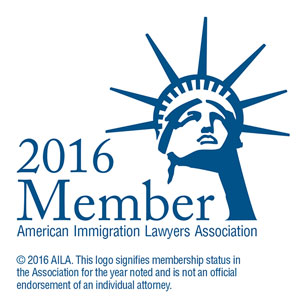How Trump Administration Officials Can Be Found Criminally Culpable For Separating Children From Parents
The Trump Administration has continued to perpetuate the falsehood that immigrants are criminals, despite overwhelming evidence that communities are safer when immigrants arrive. Trump’s recent spectacle to honor victims of crimes perpetrated by people who happened to be immigrants was designed to not just to spread hatred and fear of immigrants, but to counter criticism of his policies that have resulted in the cruel separation of children from parents. Trump cynically tried to show that Americans, whom he called “angel families,” have been permanently separated from their parents, thus attempting to deflect from the worldwide negative reaction he has received from the separation of immigrant families seeking asylum in the United States. While it is unfortunate that parents lost their children in crimes committed by immigrants, Trump has manipulated and exploited their unfortunate situation as justification for his inhumane policies.
The purpose of this blog is to continue to focus on the gross abuses that were perpetrated on children by the Trump Administration. These abuses were intentional and targeted against children from Central America that ought to make the architects criminally culpable. The separations did not arise from a policy that could not be avoided under law. Indeed, it was a deliberate policy to deter people from Central America from applying for asylum under US law by cruelly separating children, knowing that it would cause them trauma and permanent psychological harm. Accordingly, the real criminals are not the immigrants. The real criminals are those in the administration who have separated families, subjected detained immigrants to inhumane and violent conditions, and who now seek to detain immigrant families indefinitely. These officials may never be prosecuted under US law, but it is important to show how they can be held criminally culpable under international law so that they can be amenable to prosecution at some point of time in the future.
Article 7 of the Rome Statute of the International Criminal Court defines “crimes against humanity” as
[A]ny of the following acts when committed as part of a widespread or systematic attack directed against any civilian population, with knowledge of the attack:
- Murder;
- Extermination;
- Enslavement;
- Deportation or forcible transfer of population;
- Imprisonment or other severe deprivation of physical liberty in violation of fundamental rules of international law;
- Torture;
- Rape, sexual slavery, enforced prostitution, forced pregnancy, enforced sterilization, or any other form of sexual violence of comparable gravity;
- Persecution against any identifiable group or collectivity on political, racial, national, ethnic, cultural, religious, gender as defined in paragraph 3, or other grounds that are universally recognized as impermissible under international law, in connection with any act referred to in this paragraph or any crime within the jurisdiction of the Court;
- Enforced disappearance of persons;
- The crime of apartheid;
- Other inhumane acts of a similar character intentionally causing great suffering, or serious injury to body or to mental or physical health.
(emphasis added).
The widespread and systematic separation of over 2,000 immigrant children from their families, the inhumane and torturous acts committed by the United States against them, and the ongoing incarceration of children potentially constitute crimes against humanity. The United States, especially Trump administration officials who established these children and toddler internment camps, ought to be prosecuted to the fullest to redress these egregious criminal acts.
The policy of family separation has been condemned by the Office of the United Nations High Commissioner for Human Rights, stating that the practice “amounts to arbitrary and unlawful interference in family life, and is a serious violation of the rights of the child […] The use of immigration detention and family separation as a deterrent runs counter to human rights standards and principles.” High Commissioner Zeid bin Ra’ad al-Hussein further stated that such separation and incarceration of children constituted “government sanctioned child abuse.” The OHCHR statement also reminded that the United States is the only country in the world that has refused to ratify the Convention on the Rights of the Child (CRC), which specifies the civil, political, economic, social, health, and cultural rights of children, including Article 37, which provides, inter alia, that “[n]o child shall be deprived of his or her liberty unlawfully or arbitrarily.”
Amnesty International has taken the criticism one step further and has argued that the “policy of separating children from parents is nothing short of torture…The severe mental suffering that officials have intentionally inflicted on these families for coercive purposes means that these acts meet the definitions of torture under both US and international law.” Indeed, the Convention against Torture and Other Cruel, Inhuman or Degrading Treatment or Punishment, defines torture as
[A]ny act by which severe pain or suffering, whether physical or mental, is intentionally inflicted on a person for such purposes as obtaining from him or a third person information or a confession, punishing him for an act he or a third person has committed or is suspected of having committed, or intimidating or coercing him or a third person, or for any reason based on discrimination of any kind, when such pain or suffering is inflicted by or at the instigation of or with the consent or acquiescence of a public official or other person acting in an official capacity.
The US has adopted this definition of torture in 18 U.S. Code § 2340. The severe psychological and physiological effects of the separation of immigrant families rises to the level of torture under international and US law, as well as constitutes a crime against humanity given its widespread application against immigrant families, where such separation is used as a punishment for, and as a deterrence to, seeking asylum in the United States. This separation of asylum-seeking families constitutes impermissible, severe deprivation of liberty. Moreover, if reports regarding the forced drugging of detained immigrant children prove to be true, in addition to well-documented historical abuses of detained immigrant children including the denial of medical care and physical and sexual abuse, they too would rise to the level of crimes against humanity as “other inhumane acts.” Moreover, this separation, mistreatment, and incarceration violates the Convention on the Prevention and Punishment of the Crime of Genocide (“Genocide Convention”), which the United States has also ratified. Under the Genocide Convention, “causing serious bodily or mental harm to members of the group” and “forcibly transferring children of the group to another group,” with the “intent to destroy, in whole or in part, a national, ethnical, racial or religious group” constitutes genocide.
On June 20, 2018, Trump issued an Executive Order misleadingly entitled “Affording Congress an Opportunity to Address Family Separation,” purportedly ending family separation. The EO maintains support for Sessions’ zero-tolerance policy at the border and mandates family detention during the pendency of proceedings for unlawful entry, as well as for the duration of the family’s immigration proceedings. This EO thus remains in contravention of international norms and standards in regards to the prolonged detention of refugees and children. The EO is also in violation of the Flores settlement, which requires that the government not detain children for more than 20 days, and which now the government seeks to amend. Moreover, despite a recent announcement by the Department of Homeland Security and the Department of Health and Human Services of a policy to reunite these families (indicating that no such reunification policy existed prior to the taking children from families), this reunification may only occur at the end of the parents’ removal proceedings, which can take several months. The reversal of family separation does not erase the fact that the children were abused by the Trump administration’s separation policies in the first place.
The solution to family separation is not family incarceration. Indeed, the punitive incarceration of children and their asylum-seeking families not only violates the CRC and the Torture Convention as described above, but also violates the 1951 Refugee Convention and its 1967 Protocol. Under Article 31(1) of the Refugee Convention, contracting States “shall not impose penalties” on asylum-seekers, even if they entered without inspection. As Human Rights First explains, “refugees and asylum-seekers should also not be subjected to punitive or penal detention conditions […] While administrative detention is permitted in limited circumstances, the term ‘penalty’ certainly includes imprisonment […] UNHCR’s Detention Guidelines emphasize that, consistent with Article 31, ‘[t]he use of prisons should be avoided.’” The Trump administration under this EO now seeks to indefinitely detain asylum-seeking families, which is undoubtedly being implemented to deter future families from seeking refuge in the United States, which is in direct violation of international law.
Prosecution against the United States is unlikely to occur at the International Criminal Court, as it has yet to ratify the Rome Statute. Even an investigation at the ICC is unlikely because under Article 17 of the Rome Statute, the ICC can only open up an investigation in States that are unwilling and unable to genuinely carry out an investigation or prosecution. Moreover, even if the ICC opened up an investigation into the United States’ alleged crimes, the US would not cooperate, making prosecution unlikely. Advocates in the United States have been successful in suing the government over these egregious practices in domestic courts, and it thus appears that we have not exhausted all local remedies yet. Advocates ought to begin to raise these international law violations in their suits, and US judges ought to meaningfully adjudicate these violations.
Another option for the United States to be held accountable would be for another country to prosecute officials of the Trump administration in their domestic courts. Although he died before ever being convicted for his crimes, Pinochet was arrested by police in London for charges brought in Spain to punish him for crimes against humanity in Chile under the principle of universal jurisdiction. A similar action could occur here, where another country, such as Canada or Mexico, could lodge an investigation into and ultimately indict Trump or one of his cabinet members, and another country could subsequently arrest those members upon travel. While it may be impossible to do so if Trump travels to these countries as head of state, the indictment could be executed after Trump or other officials leave office and travel to other countries.
International human rights organizations and the ICC are correctly criticized for explicitly targeting and prosecuting African leaders for their human rights abuses, who rightfully deserve such prosecution but who are not alone in committing these atrocities. Recently, however, the Stanford International Human Rights Clinic and the Global Legal Action Network sought to reverse this discriminatory trend at the ICC. In February 2017, the two groups filed a Communiqué to the Office of the Prosecutor of the International Criminal Court under Article 15 of the Rome Statute, arguing that Australia’s offshore migrant and refugee detention practices constitute crimes against humanity. As documented in the Communiqué, the Australian government has systemically blocked boat refugees from accessing its shores and have instead diverted them to detention facilities on the Nauru and Manus Islands, where they are denied access to Australia’s asylum procedures. Stanford and the GLAN provided evidence to the ICC of widespread human rights abuses committed against these asylum-seekers at these offshore detention facilities, and showed that such abuses were committed for the sole purpose of deterring others from seeking asylum in Australia.
To no one’s surprise, the ICC has yet to take up the investigation into Australia’s crimes against humanity. Despite this, the Stanford Communiqué acts as guidance for a future filing against the United States, especially with regards to inhumane treatment of asylum-seekers for the sole purpose of deterring future asylum-seekers. The key difference between the Australian case and a future action against the US is that the US is committing widespread human rights abuses against asylum-seekers on US territory (in addition to preventing asylum-seekers who have lawfully presented themselves at Ports of Entry from entering the US and thus preventing them from claiming asylum, which is yet another international human rights violation). The significance of this is that it explicitly implicates the US’s international responsibilities for the fair treatment of refugees under the Refugee Convention and its Protocol, which Australia has arguably skirted by preventing asylum-seekers from entering its waters.
Advocates are far more likely to be successful in adjudicating these human rights claims in domestic courts. Indeed, our robust courts have proved effective at preventing some of Trump’s most egregious policies. While violations of international law can be raised in a lawsuit to block an egregious policy, it would not result in criminal liability for the perpetrators. Advocates should begin to look into criminal prosecution avenues to hold these officials accountable. Advocates should be cautioned, however, that they can only raise those claims that arise under treaties to which the United States has ratified. As explained above, the ability to raise these human rights claims in domestic courts prevents suit at the ICC under Article 17 of the Rome Statute. However, should advocates exhaust all domestic remedies, an ICC investigation (which is unlikely to ever result in a prosecution) remains an option. Another option is to pursue action in the Inter-American Court for Human Rights, which has the authority to make recommendations to, but not punish, the violating State. And finally, other countries may also bring suit against the Trump administration in one of their courts under the principles of universal jurisdiction.
The United States is not immune from liability for its wrongdoings. No one, not even the president or his cabinet, are above the law. Advocates should continue to consider these global litigation strategies should domestic litigation fail to find Trump administration officials culpable.




